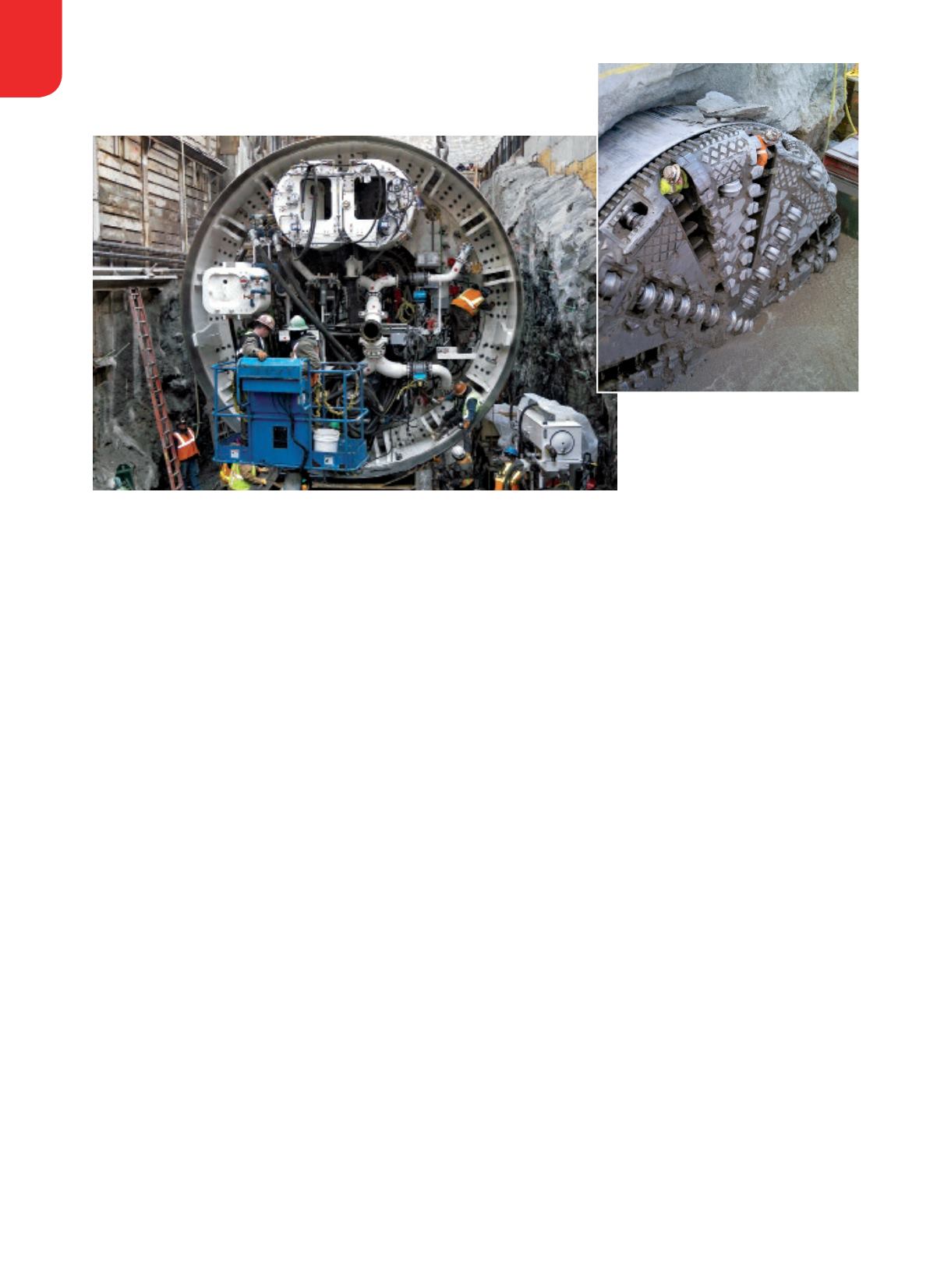

RESEARCH, EDUCATION & MEDICINE
ADVANCED DIVING
50
|
WINTER 2017
The drawbacks of diving with rebreathers are
requirements for multiple units, weight, awkwardness
and accidental damage through “manhandling” within
the lock or TBM. A hybrid approach would be to
provide OEA (or mixed gas for deep dives) at pressure
through an open-circuit mask or regulator mouthpiece.
During decompression in the lock, workers would
shift to a closed-circuit rebreather. A recirculating
loop driven by a blower would condition the workers’
breathing gas (and the gas in the lock), remove carbon
dioxide (CO
2
) and odors, maintain a constant PO
2
and
keep workers warm during decompression.
Replacing helium with crude neon
In 1972 scientists and engineers at Union Carbide’s
Ocean Systems Inc. (OSI) perfected the use of neon
as a replacement for helium in mid-range commercial
diving to about 25 bar (815 fsw) and tested the concept
in three open-water commercial dives to 640 fsw.
Differences in decompression time between helium
and neon were small, and a mixture of 33 percent neon
(Ne), 33 percent helium (He) and 33 percent nitrogen
(N
2
) appeared close to optimal for 160-250 fsw, with
the oxygen (O
2
) percentage controlled during shallow
decompression to avoid oxygen toxicity. Neon also has
advantages over helium, including lower cost, warmer
breathing gas, better drysuit thermal insulation and
improved speech intelligibility.
As an economical alternative to the optimal mix, a
lower grade of crude neon (50 percent Ne) containing N
2
and O
2
might be used without going through the costly
scrubbing process to eliminate the other component
gases that are needed anyway. Gas companies would
tune their stacks to create an economical flow of crude
neon in a range of about 50 percent Ne, 25 percent N
2
, 20
percent He and the balance O
2
from the tail gas of their
current “liquid air” distillation stacks. Once gas companies
tuned their process for this economical mixture, special
decompression tables would be developed.
Probabilistic decompression
Every dive profile has a finite DCS probability that can
serve as a tool for comparing and selecting optimal
decompression schedules. DCS probability also
depends on factors such as thermal state and exercise
that are very different between diving and compressed-
air work. Understanding these effects will require
further study based on recorded pressure-time profiles
and DCS outcomes.
While there is no agreed-upon acceptable DCS
probability, lower probabilities such as 0.025 percent
are often considered appropriate for serious DCS
such as paralysis, while 2 percent is more acceptable
for joint pain. The lack of an absolute acceptable
probability standard is addressed in the British concept
of “as low as reasonably practicable” (ALARP). Since
absolute elimination of DCS cannot be guaranteed,
ALARP does not impose requirements that cannot be
fulfilled, although preventive and protective actions
appropriate to the risks are expected when possible.
CONCLUSION
Further progress in tunneling technology through the
application of advancements in diving research may
be achievable. How long this might take remains to
be seen.
AD
Above:
Sandhogs inspect a tunnel boring
machine (TBM) cutting face.
Left:
The pressure chambers behind the
TBM allow access to the cutting face for
changing cutting tools and other work.
PHOTO COURTESY OF LIFE SUPPORT TECHNOLOGIES
PHOTO COURTESY OF LIFE SUPPORT TECHNOLOGIES


















